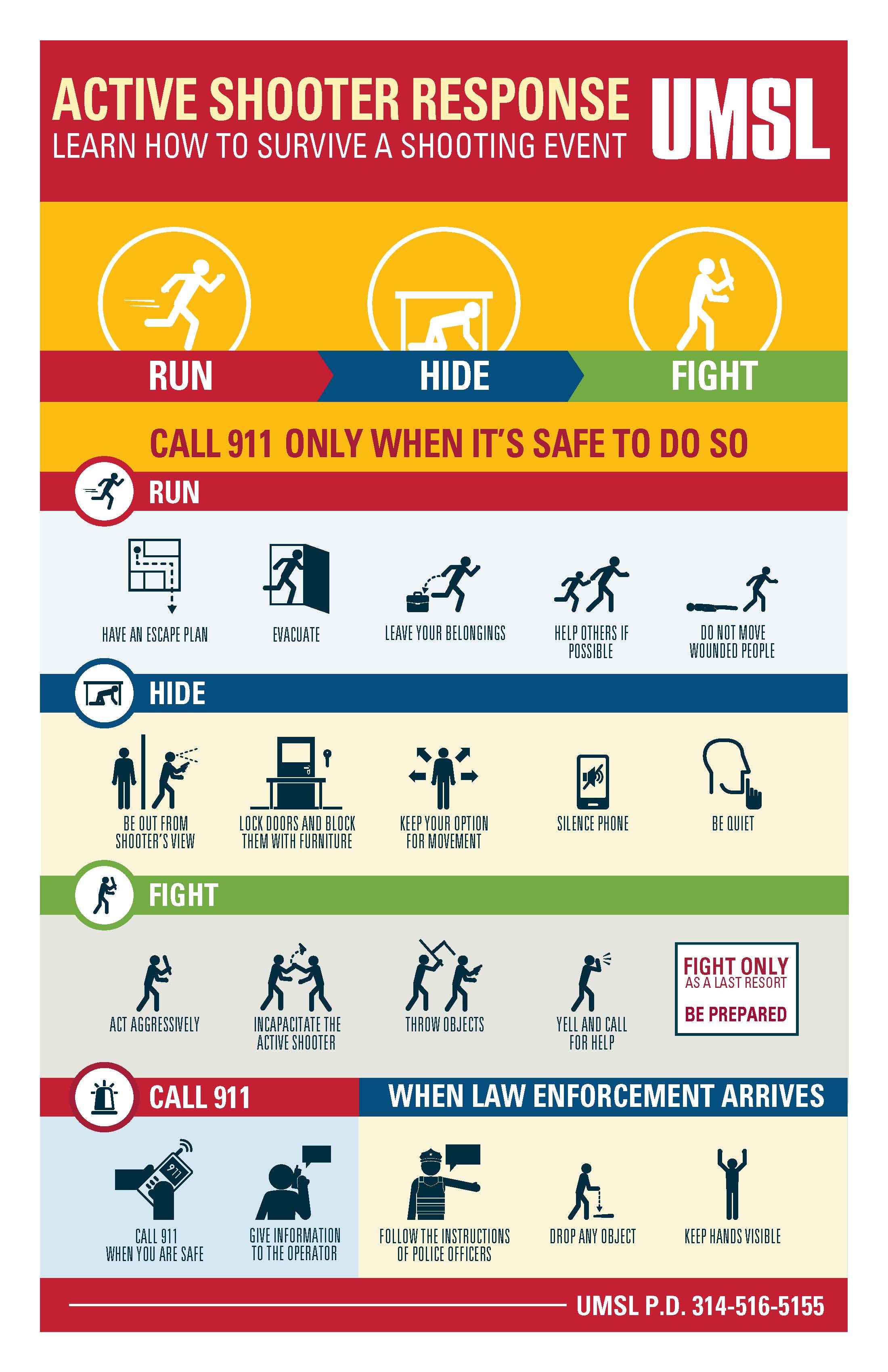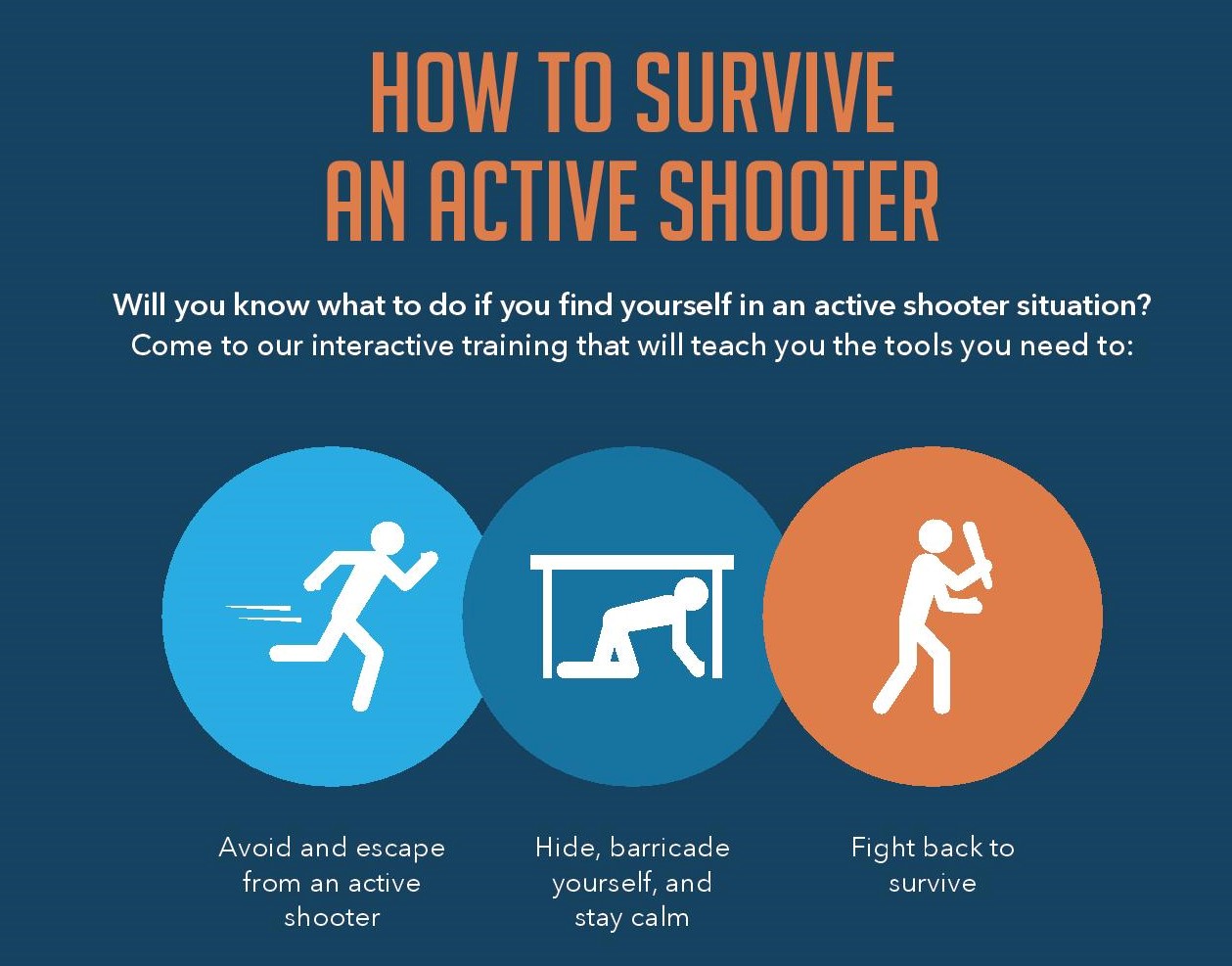The Significance of Active Shooter Training in High-Risk Settings
The Significance of Active Shooter Training in High-Risk Settings
Blog Article
Exploring the Secret Components and Goals of Effective Active Shooter Training Programs
Active shooter training programs are important in equipping people and organizations with the required abilities to respond successfully to possible dangers. These programs incorporate vital parts, such as the "Run, Hide, Fight" method, realistic situation simulations, and interaction methods, fostering a setting of readiness. Furthermore, they highlight emotional resilience to help individuals browse high-stress scenarios. As we check out the details of these training programs, it becomes apparent that comprehending their thorough nature is vital to enhancing security procedures and feedback capacities. What specific elements truly define their efficiency?
Value of Energetic Shooter Training
Active shooter training programs are essential for boosting readiness and feedback despite possible threats. These programs aim to equip people, organizations, and communities with the knowledge and abilities essential to efficiently reply to energetic shooter situations. The enhancing regularity and intensity of such occurrences highlight the relevance of positive measures, as prompt and informed actions can dramatically mitigate harm.

In addition, these programs can aid reduce the anxiety and anxiety that usually accompany discussions regarding potential threats. By supplying organized support and useful methods, individuals obtain confidence in their ability to react properly. Ultimately, the relevance of energetic shooter training hinges on its potential to conserve lives, minimize injuries, and cultivate a ready and resilient community qualified of dealing with unanticipated challenges.
Key Elements of Training Programs
Effective active shooter training programs commonly incorporate several key parts developed to prepare participants for real-world scenarios. The very first component is thorough education and learning on the nature of energetic shooter events, including statistics, instance research studies, and psychological aspects that affect assailants. This academic foundation is essential for fostering recognition and understanding amongst participants.
Following, programs commonly include training on personal safety and security procedures, emphasizing the "Run, Hide, Battle" technique. Participants discover how to assess their atmosphere, make quick choices, and take suitable activities during a situation. Furthermore, the inclusion of efficient communication abilities is vital, as individuals must recognize how to report cases and share important details with police.
Another necessary component is the participation of police or safety specialists, who give insights right into tactical reactions and the importance of participation throughout a crisis. Furthermore, programs ought to deal with the emotional aftermath of an active shooter situation, providing strategies for coping and recuperation.
Finally, ongoing training and correspondence course are critical to ensure that knowledge continues to be current and individuals really feel confident in their abilities. With each other, these vital components create a well-shaped training program that outfits individuals to respond effectively to an active shooter event.
Realistic Scenario Simulations
Reasonable circumstance simulations are a critical element of energetic shooter training programs, offering participants with the opportunity to take part in hands-on technique that mirrors prospective real-life situations. These simulations boost the training experience by creating an immersive atmosphere where individuals can apply academic knowledge in useful setups.
With the use of role-playing, simulated scenarios, and specialized training centers, individuals experience the instant challenges and stress factors connected with an active shooter case. This method of training advertises quick decision-making, synergy, and the application of safety and security protocols under pressure. It allows -responders to create essential skills such as situational understanding, risk assessment, and reliable evacuation treatments.
Furthermore, sensible simulations assist to determine possible weaknesses in participants' actions, enabling instructors to supply targeted responses and enhance total readiness. The unification of differing circumstances, consisting of various areas and attacker accounts, better enriches the training experience, page making certain that individuals are well-equipped to manage a series of potential circumstances.
Eventually, these simulations offer not just to advise yet additionally to develop confidence amongst individuals, cultivating a feeling of preparedness that is crucial for effective emergency action despite an active shooter threat. active shooter training.
Communication Approaches in Training
Clear communication is crucial in active shooter training programs, as it directly affects the efficiency of reaction initiatives throughout a situation. Training individuals should comprehend the methods and treatments that will certainly assist their actions if faced with an energetic shooter scenario. Developing clear lines of interaction makes certain that all individuals involved can pass on info immediately and properly.

In addition, training programs should emphasize the relevance of active listening - active shooter training. Individuals should be trained to analyze and respond to details efficiently, decreasing misunderstandings that could result in dangerous situations. Normal feedback sessions post-training can additionally fine-tune communication approaches, ensuring that all participants feel encouraged to share their experiences and tips for enhancement. Ultimately, reliable communication approaches are necessary for preparing individuals to react decisively and cohesively despite an active shooter incident.
Mental Readiness Methods
Emotional preparedness strategies are increasingly acknowledged as essential elements of energetic shooter training programs. These methods aim to gear up people with the mental strength needed to react successfully in high-stress situations. By cultivating an attitude in harmony with prospective dangers, participants can better manage worry, anxiousness, and complication throughout site here crucial occurrences.
Key mental readiness strategies consist of scenario-based training and stress and anxiety vaccination exercises. Scenario-based training submerses individuals in practical simulations that mimic the disorder of an energetic shooter occasion, allowing them to practice decision-making under pressure. This direct exposure helps build familiarity with emergency situation protocols, enhancing natural actions.
Stress inoculation entails steady exposure to stress-inducing circumstances, allowing people to develop coping mechanisms. This can consist of breathing exercises, visualization techniques, and cognitive restructuring to reframe unfavorable ideas. By integrating these methods, training programs can grow a feeling of confidence and control, which is essential in situation situations.
Furthermore, post-incident mental support is vital to resolve the emotional aftermath of an energetic shooter event. Integrating psychological wellness sources into training programs not only prepares people for immediate feedbacks however additionally advertises long-term emotional well-being, inevitably adding to a much safer and much more resistant setting.
Verdict

Report this page